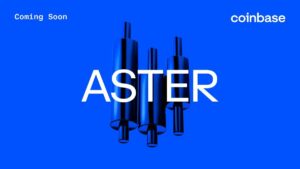TL;DR
- Aster DEX’s second airdrop triggered massive trading activity, briefly pushing TVL above $2 billion before falling back to $655 million.
- The project’s link to Changpeng “CZ” Zhao through YZi Labs fuels both credibility and controversy.
- Users report mixed satisfaction due to delayed token allocations and data inconsistencies, while wash trading concerns raise questions about the platform’s long-term organic growth.
Aster has gained attention not only for its aggressive airdrop campaigns but also because of its formal connection to YZi Labs, the investment arm tied to Changpeng “CZ” Zhao, cofounder of Binance. While this association boosted credibility and initial hype, it has also sparked debate within the trading community. Some users were disappointed by delays and inconsistencies in the distribution of ASTER tokens, which temporarily eroded trust. Despite these frustrations, the platform achieved remarkable trading activity, reporting $434 million in 24-hour volume, marking it among the most active DeFi derivatives exchanges.
However, experts caution that part of this activity may be driven by incentives rather than genuine organic demand. Exclusion from metrics aggregators like DeFiLlama, combined with rumors of wash trading, suggests that Aster still needs to prove its underlying liquidity and stability beyond marketing-driven spikes. Analysts also note that community feedback and early technical reviews will likely shape the project’s reputation over the coming months, especially as new features are introduced and the token matures.
Competing Against Execution And Incentives
Aster has attempted to differentiate itself by offering extreme leverage of up to 1001x and deploying aggressive token incentive programs. Yet, when measured against established competitors, its position is mixed. HyperLiquid maintains an edge in technical execution, with superior liquidity, speed, and overall TVL, while Aster’s primary advantage lies in its ability to generate hype. Meanwhile, smaller competitors such as Lighter and ApeX continue to innovate incentive models, presenting an ongoing challenge for Aster to retain the attention of airdrop-driven traders.

Sustaining long-term growth will require Aster to convert short-term hype into steady trading volume and user trust. The project’s ability to refine its infrastructure, address perceived weaknesses, and implement robust security measures will determine whether it can challenge HyperLiquid’s technical supremacy or remain reliant on high-profile endorsements and marketing. Observers also emphasize that regulatory clarity and transparent reporting may influence institutional interest, adding another layer of complexity to Aster’s expansion strategy.
Ultimately, while the second airdrop succeeded in creating buzz and spotlighting Aster, the real test lies in building an organic, reliable trading ecosystem.










